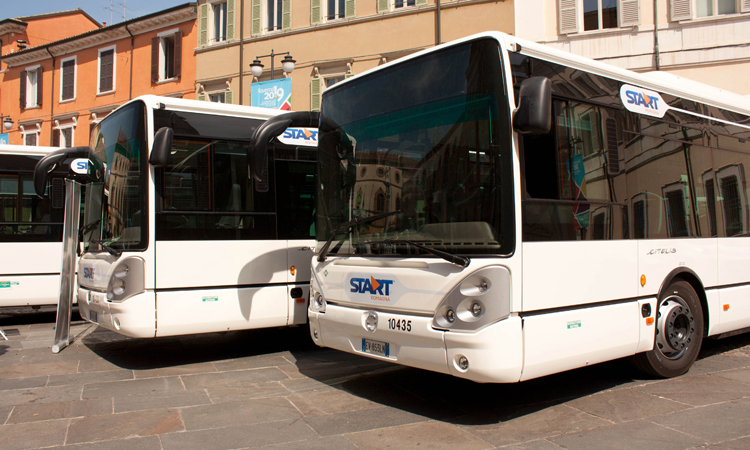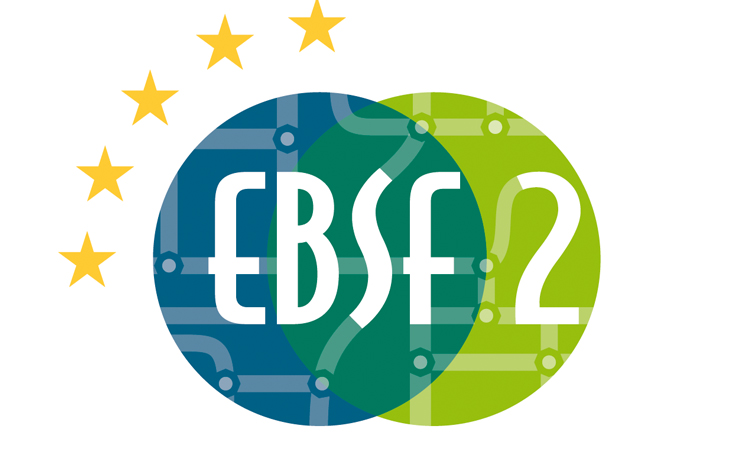Testing the bus of the future
- Like
- Digg
- Del
- Tumblr
- VKontakte
- Buffer
- Love This
- Odnoklassniki
- Meneame
- Blogger
- Amazon
- Yahoo Mail
- Gmail
- AOL
- Newsvine
- HackerNews
- Evernote
- MySpace
- Mail.ru
- Viadeo
- Line
- Comments
- Yummly
- SMS
- Viber
- Telegram
- Subscribe
- Skype
- Facebook Messenger
- Kakao
- LiveJournal
- Yammer
- Edgar
- Fintel
- Mix
- Instapaper
- Copy Link
Posted: 14 October 2016 | Michele Tozzi - UITP, Silvia Magnalardo - Ravenna, Yannick Bousse - UITP | No comments yet
The European Bus System of the Future 2 project1-4 (EBSF_2) is an ‘Innovation Action’ co-funded by the European Union and coordinated by the UITP – the International Association of Public Transport. The project has been conceived as an open platform for dialogue on bus systems that includes key stakeholders across Europe and encompasses all areas of expertise (from manufacturing, to operations and research). Michele Tozzi (Project Director), Yannick Bousse (Dissemination Manager) and Silvia Magnalardo (Ravenna Demonstration Leader) explain more in this article.


The key working areas of EBSF_2 are energy strategy and auxiliaries; green driver assistance systems; IT standards introduction in existing fleets; vehicle design (capacity, modularity, accessibility); the interface between the bus and urban infrastructures; and intelligent garage/depot and predictive maintenance. All of these rely on field tests by means of new vehicle technologies and infrastructures in combination with operational best-practices to be tested in real urban environments across Europe.
Demonstrations are taking place in 12 cities: Barcelona (ES), Dresden (DE), Gothenburg (SE), Helsinki (FI), London (GB), Lyon (FR), Madrid (ES), Paris Area (FR), Paris City (FR), Ravenna (IT), San Sebastian (ES), and Stuttgart (DE). Each city has committed to test a subset of innovations and several vehicles are being equipped with these solutions that are running in operation for a period of between six to 12 months. The assessment of the innovative measure is a classical before-vs-during-the-implementation comparison of results, with Key Performance Indicators measuring the performance variations in each case study and cross-case. Tests in controlled environments (through the use of prototypes and simulation tools) are planned to prove the potential of key solutions that are currently at an early stage of development. An example is the adaptation of bus segments to actual passenger demand through coupling systems or unmanned garage movements in Paris City. A key output of the project will be the publication of guidelines to facilitate the introduction of the EBSF_2 technologies and solutions in bus systems across Europe.
The Ravenna demonstration: new maintenance tools to decrease costs
Optimised maintenance processes and scheduling are a central issue in improving service reliability and operational effectiveness of bus systems. However, bus maintenance tasks are very often managed using basic procedures. The development of IT standards solutions and innovative technologies can offer new tools to change the diagnostic process of vehicle fleets and move from preventive to predictive maintenance approaches, eventually decreasing garage/depot and maintenance costs.
The key technological solutions to be implemented and tested within the EBSF_2 Ravenna demonstration result from the needs of the local public transport company – START ROMAGNA – that operates bus public transportation in the Italian Provinces of Ravenna, Forlì-Cesena and Rimini. With a fleet in excess of 700 buses running on a network of more than 2,100km, the operator transports almost nine million passengers per year. START ROMAGNA is hosting the Italian pilot site by making its facilities and fleet available to demonstration partners (Pluservice, MEL-System, UNIROMA1, the UITP) as well as allowing the installation of new equipment, such as lubricants’ quality sensors to optimise the usage of the engine oil, on-board a fleet of buses that will be operating in real service, requiring 12 months testing. The demonstration is led together with the service provider Pluservice – an Italian software house with 30 years of experience in Enterprise Resources Planning systems designed to integrate the processes management of a passenger transport company.
Within EBSF_2 the software tools developed by Pluservice for the management of the fleet maintenance and garage/depot processes has been made available. START ROMAGNA is already working with such a software and database, which guarantees a good starting point for the innovative applications to be developed and tested. These include:
- Maintenance software with the ability to analyse data coming from lubricants’ quality sensors to assess the oil quality. This avoids potential breakdowns by replacing spare parts in advance
- Software to assess and plan the fleet’s maintenance costs, according to information on the average distance covered by vehicles through an accurate analysis of the cost items.
Specific targets have been identified and will serve as a basis to assess the success of the project through quantitative key performance indicators. The overall objective is to minimise operating and maintenance costs by speeding up maintenance operations; reducing the non-operational lifetime of vehicles; increasing the fleet’s reliability and economic efficiency; and reducing the vehicles’ fuel consumption and emissions thanks to better performance of the engines.


European Bus System of the Future 2
Technical experiments
Predictive maintenance lessens maintenance costs, breaks, spare-parts usage, and quantity of waste material as well as contributes to a more precise service scheduling. In particular, oil quality monitoring can reveal a lot about the health of an engine and the presence of residual metals indicates that maintenance is necessary before expected. Conversely, if the result of the oil analysis is good, ordinary maintenance can be postponed with a reduction of cost.
Today START ROMAGNA is able to schedule the fleet’s maintenance, but no predictive processes are implemented. By utilising the existing software from Pluservice, the maintenance management tool developed within EBSF_2 will forecast the proclivity of vehicles’ components via analysis of historic data related to motor oil sampling. Several qualitative attributes of the engine oil will be observed (conductivity, temperature, amount of water, etc.) to investigate the oil degradation; predict the appropriate timing of replacement; and report on any unexpected contamination, avoiding serious mechanical problems to the vehicles. The maintenance software will be able to analyse the data according to the oil-quality and therefore elaborate on the remaining life of specific engine components to avoid breakdowns.
Six vehicles have been equipped with data collectors and with lubricant sensors that are able to send the information to an Automatic Vehicle Monitoring (AVM) back-office system. The sensors record the oil capability, conductivity and trend in order to sound the alarm when required. In addition, every two vehicles in six are equipped with a purifier to test the action of the filter on the lubricant quality, compared with the vehicles without the filter. It is expected that the frequency of oil changes will be lessened on the vehicles equipped with the filter, with a positive impact in terms of cost and operational effectiveness. The most suitable vehicles for the test are those with a frequency of changing the motor oil every 20,000km for diesel-fuelled vehicles and 30,000km for methane-fuelled vehicles. Considering the average distances covered by the test vehicles, a period of 12 months is required to assess the results.
The demonstration is complemented by a new software application for garage/depot budget planning. In the present scenario START ROMAGNA uses only historic data to forecast the maintenance budget; no prediction on maintenance costs is performed. On the contrary, thanks to the new application developed by Pluservice within EBSF_2, the objective is to optimise the maintenance activities and plan the replacement of spare parts at the right time. This will be possible by combining the data collected by sensors – that reveal the ‘health status’ of specific spare parts that might be damaged – and the distances travelled according to the scheduled service. By knowing in advance the planned kilometres that the fleet will cover, as well as the subsequent maintenance costs, the authority will be able to build a budget plan for the coming year.
To accurately assess the future costs for the management and operation of the fleet, the tool takes into consideration the budget for planned/repairing/extraordinary maintenance; maintenance resulting from accidents; budget for using fuels and lubricants; as well as budget for administrative deadlines and contracts. The interface of the application also allows the visual comparison of planned budget figures with actual figures in order to allow the operator to make corrections on cost management. The analysis of the maintenance budget will involve the entire START ROMAGNA fleet.
The EBSF_2 Ravenna demonstration is committed to investigating the potential of predictive maintenance and intelligent garage/depot procedures in improving the efficiency of bus fleets. The goal for the local public transport operator is to provide – as a minimum – the same services to passengers, but with fewer expenses. Overall maintenance cost savings are estimated to be approximately 15%.
In the first six months of the project the two technological solutions have been successfully designed to fulfil a set of functional requirements defined in collaboration with the local operator. Tests are running in parallel and the data collection began in September 2016. The results of the tests will be published according to the project’s scheduling.
References
- ebsf2.eu
- twitter.com/ebsf_2project
- linkedin.com/groups/8318260
- facebook.com/EBSF-2-102451223149237/?fref=ts
- ebsf2.eu/partners
EBSF_2 in Brief
The European Bus System of the Future 2 (EBSF_2), coordinated by the UITP, combines the efforts of 42 partners5. The joint collaboration of industries, operators and authorities allows for testing and evaluating a set of technological solutions for improved efficiency of urban and suburban bus systems, as well as attractiveness to users.
- Duration: May 2015–April 2018
- Budget: €12.4m (€10m EU-funded)
- Coordinator: UITP
Biography






Related topics
Fleet Management & Maintenance
Issue
Issue 5 2016
Related modes
Bus & Coach
Related people
Michele Tozzi, Silvia Magnalardo, Yannick Bousse








